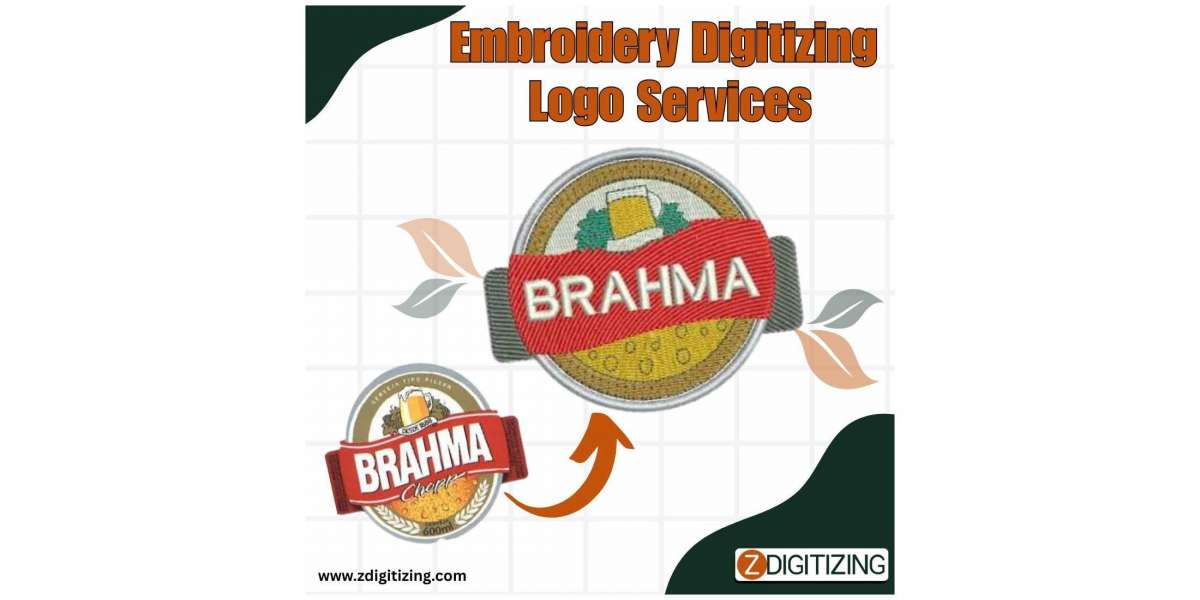In today’s visually-driven marketplace, a brand's identity is often defined by its logo. Whether stitched on uniforms or printed on promotional items, a clean and sharp logo creates a lasting impression. However, to take a logo from a digital concept to a physical form, especially in embroidery, logo digitizing is essential.
What is Logo Digitizing?
Logo digitizing is the process of converting a graphic logo into a digital embroidery file that can be read by an embroidery machine. This isn’t as simple as uploading an image. The digitizer must manually map out every stitch, direction, and sequence to ensure the logo looks perfect when embroidered on fabric.
Think of it like translating a language; the original logo is in a format readable by screens, while the embroidery machine needs a different "language" to understand how to recreate it with threads.
Why Logo Digitizing Matters
Without proper digitizing, even the most stunning logo designs can look distorted or unprofessional when embroidered. Here’s why it matters:
- Precision and Clarity: Good digitizing ensures the logo maintains sharp lines, proper proportions, and a clean finish, even on small surfaces like caps or sleeves.
- Fabric Compatibility: Different materials require different stitch types. A digitized logo tailored to the fabric helps prevent puckering or thread breaks.
- Machine Efficiency: Well-digitized files run smoothly on embroidery machines, reducing production time and thread waste.
- Brand Consistency: Uniform branding across different materials (t-shirts, jackets, hats) depends on having properly digitized logo files.
Key Elements of a High-Quality Digitized Logo
Creating a flawless digitized logo involves a mix of software skills and artistic judgment. Here are some important elements:
- Stitch Type Selection: Choosing between satin, fill, or run stitches depending on the design and fabric.
- Pathing: Planning the most efficient stitching path to reduce jumps and thread cuts.
- Density Settings: Adjusting stitch density to ensure coverage without excess thread.
- Underlay Stitches: Adding foundation stitches to stabilize the design on the fabric.
- Push Pull Compensation: Accounting for how stitches behave during embroidery to maintain design accuracy.
Benefits of Professional Logo Digitizing
Hiring a professional digitizer brings a range of benefits, especially for businesses serious about brand representation:
- Better Design Translation: Pros understand how to maintain design integrity during embroidery.
- Time Savings: Avoid costly trial-and-error with DIY digitizing.
- Support for All Formats: Professionals deliver files in multiple formats (DST, PES, JEF, etc.), compatible with various machines.
- Expert Advice: Recommendations on tweaks or adjustments to suit different embroidery applications.
Industries That Rely on Logo Digitizing
Logo digitizing is widely used across many sectors, including:
- Embroidery Shops
- Corporate Uniform Providers
- Sports Apparel Manufacturers
- Promotional Product Vendors
- Design Agencies
Tips for Getting the Best Results
If you’re planning to get your logo digitized, keep these best practices in mind:
- Use High-Resolution Files: The clearer the original logo, the better the digitized result.
- Simplify Complex Designs: Intricate details may not translate well to thread.
- Test Before Bulk Production: Always run a sample to check quality.
- Communicate with Your Digitizer: Share your fabric type, size, and application details.
Final Thoughts
Logo digitizing bridges the gap between digital branding and real-world visibility. It's not just a technical step; it’s a creative process that ensures your brand appears polished, professional, and consistent across every medium. Whether you’re a small business or a large enterprise, investing in expert digitizing pays off in brand recognition and quality presentation.








